Nature
Tree Pits
The planting of tree pits (the holes within which roadside trees are planted) with flowers and other plants has become popular in several of our roads. It is supported by Islington Council; the Islington in Bloom competition now has a best tree pit category. If you’d like to voluntarily plant a tree pit to brighten up your street, you can find out more here on Islington's website. Image
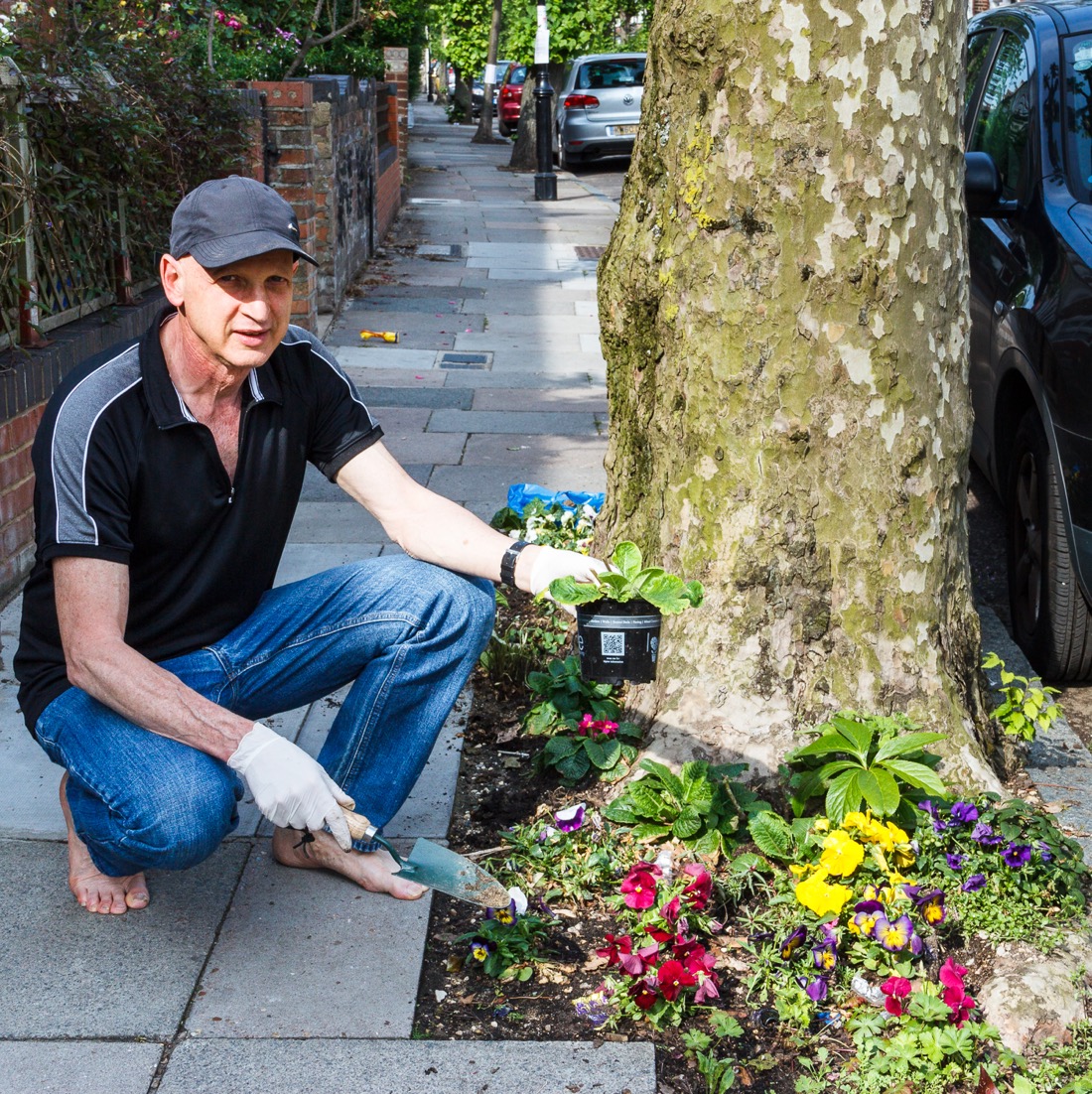
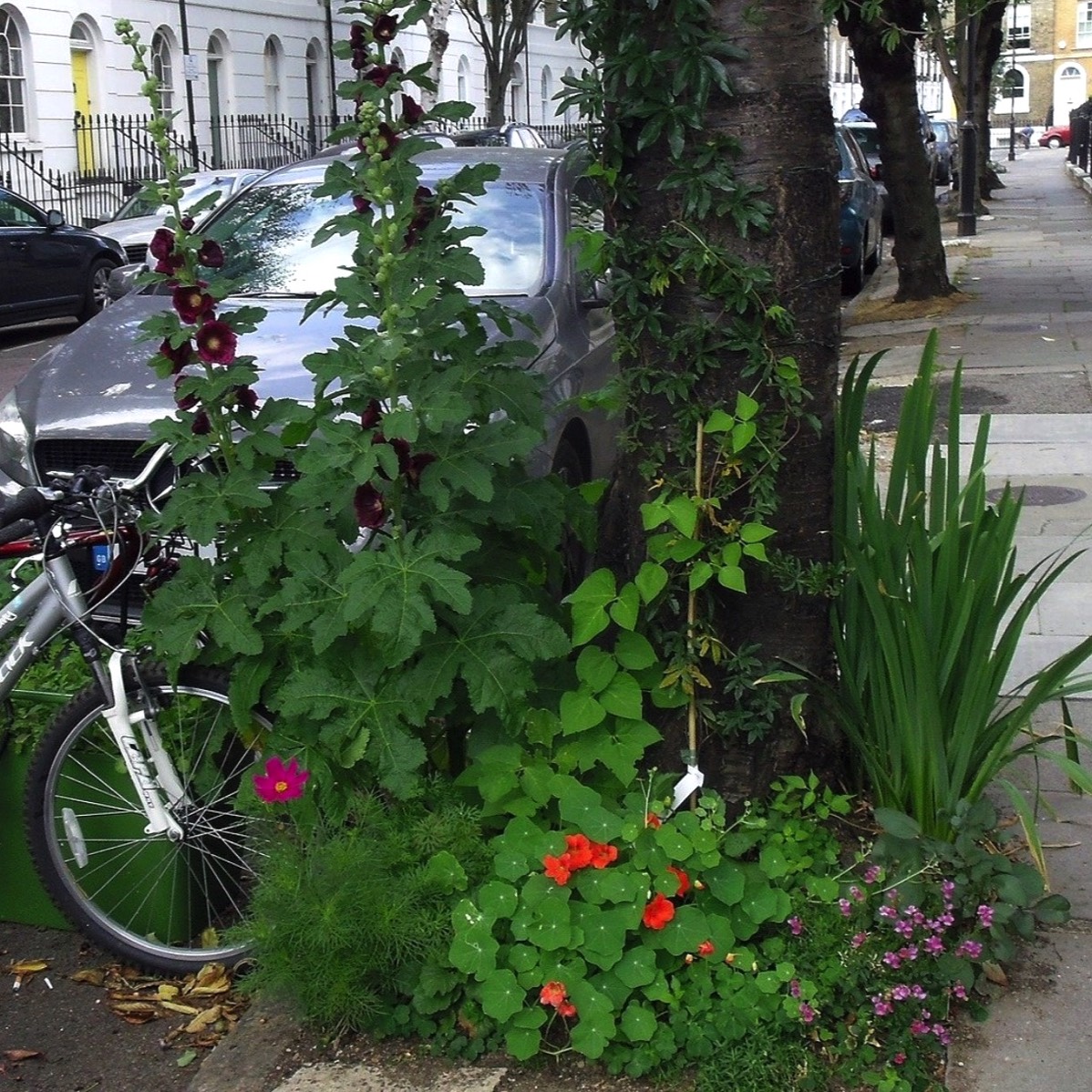
Bats
Tony’s Nature Notes
- 2/7/12
- 18/8/12
- 12/3/13
- tab 4
- tab 5
- tab 6
- tab 7
- tab 8
- tab 9
- tab 10
- tab 11
- tab 12
- tab 13
- tab 14
- tab 15
- tab 16
- tab 17
- tab 18
- tab 19
- tab 20
No. 1: From My Garden
I am sitting under the umbrella of the apple tree I rescued from a building site I had to clear near Heathrow 45 years ago. As I enjoy my boiled egg and granary toast I am joined by a family of wrens. One of the parents is immediately approached by two or more fledglings who beg to be fed every time he/she reappears from the undergrowth. A couple of the family of youngsters come to examine me from a mere arm’s length. One is performing a high-pitch trill. This alarm call is more like a question than a warning. I have never heard birds sing as much as in the last three months when the whole population seemed to be trying to entertain potential mates and us humans. I have had wonderful prolonged performances by robins, hedge sparrows, blackcaps, wrens, blackbirds and song thrushes. These last ones have been enchanting: an amazing 19-hour day of music, sometimes. I was greatly relieved to see a young song thrush about a week ago. Numbers countrywide have suffered badly due to overuse of slug pellets, so it is thought – with poisoned snails being consumed by unsuspecting birds. London’s large parkland areas must be an invaluable asset to reduce the problem.
A wood pigeon starts its flirtatious coo. They are amorous every month of the year unless it is too cold. Although I am approximately 250 yards from the Archway Road, the traffic is just an insignificant “whish”. It is too early for selfish bikers screaming about. Then a bunch of noisy herring gulls conversing at 2000ft are clearly audible. Their happy appreciation of life on the wing is most cheering.
Underneath my apple branches I can clearly see a bright blue backdrop to the bright yellow leaves of the freesia I planted 35 years ago. This pseudo-acacia has done very well until this year. I am wondering whether the drought earlier this year hampered its leaf development. They are smaller than usual and have started falling earlier than usual. I am desperately hoping that it not a disease affecting the species in other parts of the country, resulting in some nurseries not selling them. This tree is adorned up to 12 ft by the 4in white flags of the wild convolvulus that has occupied quite a large area of my garden. It uses any vantage point it can to advertise itself. It is using the holly or the trunk of the acacia. I thought I had discouraged the ivy that is now 18ft above ground but I have obviously missed a stem or two in my snipping.
This morning a lone swift passed overhead, presumably trying to stock up energy from insects to start its 4000 mile journey back to Africa in a day or two. They are very regular in time of arrival and departure – early May/late April to early August. Their numbers seem down this year and late due to the weather. How they discover spots to nest for reproducing is a miracle. Modern buildings or tidy maintenance of older houses narrows their choices. It seems incredible that the only time they stop flying is to tend their nests or offspring.
Last week I was amazed to see a three quarter grown fox cub fly over the 7 ft 6 in high fence between my garden and next-door. It landed on my window sill, which had flowerpots on it. How it managed not to dislodge or damage anything with little or no space in between was a mystery.
The recent hot weather has encouraged a few butterflies to hatch or wake up. They have been in very short supply this year, it being so cold and wet for so long but a quick switch in the weather is miraculous. Holly blues, small whites, cabbage whites, commas – even a brimstone have delighted recently.
Other items of interest included the account of my neighbour watching a kestrel hovering over his garden before plunging onto and then carrying off a field mouse. It explained how I lost all but one of my ripe strawberries encaged in my own garden. The wire netting was no problem for such a four-legged little mammal. The squirrels have already destroyed 80% of my unripe apples. They merely nibble a tiny bit, then knock them off to smash on the concrete below. Picking the last few and hoping they will ripen off the tree is usually the only solution. The recent prolonged wet period has encouraged the slugs and snails to such an extent that they have been comprehensive in eating my newly planted flowers from Spalding. Now I cannot work out what the plants were. They destroyed a whole melon plant in 18 hours. Their brilliant coloured bodies or shells ranging from bright yellow to black or auburn is a forgiving compensation.
Tony Wylam 2/7/12
No. 2: Report on Hampstead Heath Walk on 18th August, 2012
The weather forecast warned of a hot and sunny day with temperatures in the 80s. This proved accurate. The five participants did not start until about 10.00am and thin clothing was certainly necessary. Swans were scaring dogs that dared to go down in the bottom pond nearest Parliament Hill and there was extensive weed growth over much of the water, but many young moorhens and coots were ploughing through it and diving. We saw at least 6 different kinds of dragon and damsel flies hawking about. They ranged in colour from brown, green, black or iridescent blue. We also witnessed at least 6 different types of bumble bees. They seemed to have fared much better than honeybees this year, perhaps due to their additional hairy insulation?
Of particular interest was a family of very young mallard ducklings racing about on the surface of the water after insects on the previous toy-boating pond. One guessed the parents had tried again after previous unsuccessful breeding attempts due to earlier extremes of unseasonable weather. We did not see any reed warblers in the enclosed fourth pond - Norfolk reed had been specially planted approximately 40 years ago, which had been a great success. Instead a young moorhen was nervously inspecting a half-submerged frog just inside the metal fence and only a metre away from our feet! Other ducks and coots had been tamed by expecting to be fed bread by humans. They came very close. In the distance a juvenile mallard standing on a sunken tree in the bright sunshine made it difficult to identify. A kingfisher darted over the water and disappeared under a tree in the far corner. It was so quick that half of our party missed it. Many calls of nuthatches in the treetops were clearly audible but not visible. A party of parakeets displayed their considerable vocabulary with their extensive morning repartee. The City of London obligingly gave us information concerning their fenced-off patch of wild flowers they had sewn – brilliant yellows, blues and whites gave a wonderful display and encouraged small insects. The hot weather had not really had enough time to encourage many butterflies. Later on in the month, cabbage whites, peacocks, red admirals and holly blues would be more in evidence.
We celebrated our happy excursion with beer or wine and tasty snacks in a pub opposite. It was the icing on the cake of the natural delights on our doorstep.
Antony Wylam 10/10/12
No. 3
I rose to witness six inches of Snow adorning the garden furniture and beds. It was warmer though and I was surprised to hear a wood pigeon doing its amorous coo. Even a great spotted woodpecker was drumming and then audibly pecking at the top of an acacia trying to reveal insects or grubs to eat. The blackbirds and robins seem greatly to appreciate the oats I have provided for them. Also blue and great tits have been after the seeds and fat balls. I have to guard them initially or squirrels and wood pigeons will devour the lot in seconds. I am afraid I have not heard a song thrush for a week or so. One had been performing magnificently about dawn for at least two months. Some mornings it would last for a whole hour. The two robins feeding at the bird table have been quite sociable. Maybe they are a pair but hen and cock are very difficult to tell apart. Territorial disputes can be very vicious. I was working in St. John’s Wood in the autumn. They were locked together and fell 10ft from a tree and hit the ground but desperately continued trying to overpower each other for several minutes. I wondered if one was a juvenile trying to assert itself.
I was delighted and relieved to see a wren disappear down a hole in the snow covering extensive ivy in my garden. It did not reappear for several minutes. Hopefully it managed to locate something edible. The smaller the bird, the greater the difficulty of surviving cold weather. Wrens were wiped out in the British Isles in 1947. We were replenished with new immigrants from the Continent and thanks to their large families were soon back up to scratch. They will keep each other warm at night by roosting together in small spaces. A keen and knowledgeable naturalist friend once counted more than 30 exiting a bird box in the morning!
We have finally witnessed the end of the autumnal leaf fall. It was a prolonged period last year. The extremes of rain and temperature meant some trees lost their leaves in September. Then we had a success of individual colours. Kenwood’s beeches were their usual spectacular shades of gold and brown. Birches and Whitebeam were bright yellow. One of my favourite trees, an enormous Liquid Amber in Bishop’s Avenue turned its brilliant scarlet. It does not last long but is briefly fantastic. The berries were mostly eaten early by the birds. They have had a hard year (the birds) with not a great deal to eat. The wood pigeons in the variegated holly outside my front door were flapping so loudly to get at its crop, I thought somebody was trying to break in next door. My viburnum fragans and my neighbour’s winter jasmine both are displaying brilliant coloured flowers. Snow is a bit tiresome for traffic. I’ve had to salt my front steps four times but nature is beautiful.
12/3/13
Islington Gardeners
A group of committed gardeners whose purpose is to protect and enhance the green spaces in the Borough (including Whitehall Park Gardens, pictured) and to organise an annual programme of garden-related activities for the membership. There is plenty of useful and interesting information on their website.
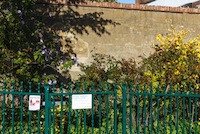
Parks, Gardens & Nature Reserves
SUNNYSIDE GARDENS
As well as being a lovely community garden, Sunnyside Gardens once hosted a weekly organic food market, regular bicycle maintenance workshops and numerous community events, and they have been awarded the prestigious ‘Green Pennant’. A fire in July 2013, probably arson, put an end to much of that, and the garden is struggling to keep its head above water. There’s a bit about them on Greg Foxsmith's blog and pictures on our Events page. They have a website and you can follow them on Facebook.
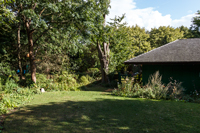
Foxes
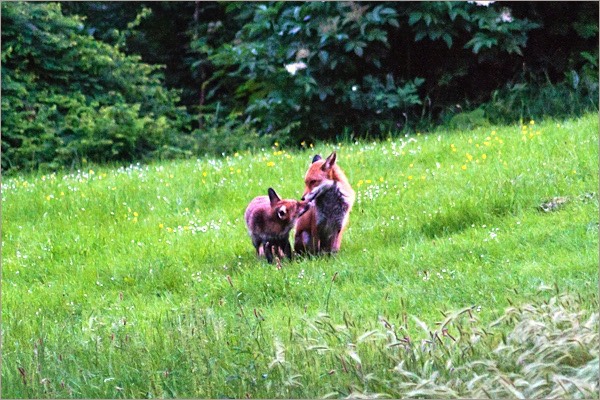

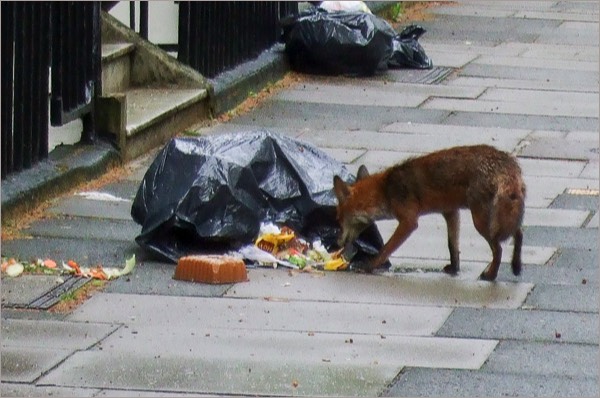
Other Community Gardens in Islington
WATERLOW PARK
Set on a hillside in Highgate. it boasts one of the best panoramic views over London. It was bequeathed to the public by Sir Sydney Waterlow as a ‘garden for the gardenless’ in 1889. The Friends of Waterlow Park is an independent local community group involved with Park issues and events.
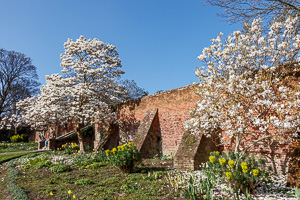
PARKLAND WALK
The Parkland Walk Local Nature Reserve follows the route of the old railway line between Finsbury Park and Highgate. The Friends Of The Parkland Walk hold a work session every second Saturday of the month for 2 hours. There is usually at least 1 longer session each month run by The Conservation Volunteers on Tuesdays or Thursdays.
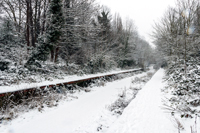
QUEEN’S WOOD
The Friends Of Queen's Wood is a voluntary group that was set up to help look after Queen’s Wood and its trees, plants, birds, animals, fungi and other forms of wildlife. We are a very friendly group and are always delighted to welcome new members.
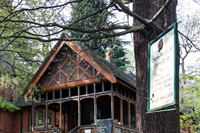
HIGHGATE WOOD
The ancient woodland of Highgate Wood is a haven for wildlife and provides numerous easily accessible and scenic woodland trails. There is an excellent playground, a renowned café, an information hut with booklets, newsletters and trail guides and well maintained toilet facilities.
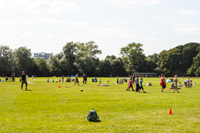
BARNSBURY WOOD
London’s smallest Local Nature Reserve is a delightful hidden woodland with wildlife garden. It was originally a garden belonging to George Thornhill, who built the surrounding houses in the 1840s. The area was eventually abandoned to nature and then became woodland; it is home to a range of wildlife including long tailed tit, lesser stag beetle, common toad and the sixteen spot ladybird. Open Tuesdays 2 to 4pm all year and Saturdays July to September 2 to 4pm.
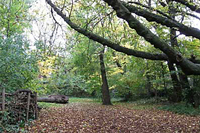
CROUCH END OPEN SPACE
Between Crouch End and Muswell Hill lies an area of open fields and woods, providing both formal and informal leisure opportunities. The variety of landscapes – woodland, allotments, playing fields and meadow – encourages bio-diversity, and it has attained Grade 1 status as an area of ecological importance.
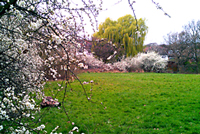
GILLESPIE PARK NATURE RESERVE
Gillespie Park is a 2.8 hectare Local Nature Reserve in the heart of inner city London. The reserve is managed for the benefit of wildlife. An amazing 244 plant species, 94 bird species and 24 types of butterfly have been seen here. Download their brochure.
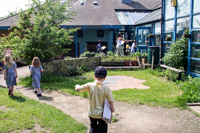
CAMLEY STREET NATURAL PARK
Camley Street Natural Park was created from an old coal yard back in 1984. It sits in the middle of King’s Cross, alongside the sparkling new Eurostar station at St Pancras. It is popular with all kinds of people seeking respite from the buzz of the city around them, as well as being a hub for London Wildlife Trust volunteers.
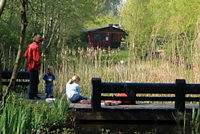
EAST RESERVOIR NATURE RESERVE
London Wildlife Trust has created a garden space on an historic site nestled between the New River and East Reservoir in Stoke Newington. Complete with a fully equipped eco-classroom with a living roof, it provides a base for school visits and a variety of community projects.
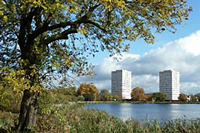
MARKFIELD PARK & BEAM ENGINE
The Markfield Beam Engine and Museum is housed in its original Grade II listed Engine House in the former sewage treatment works for Tottenham which now forms part of Markfield Park. There is a cafe and wild flower gardens, and it’s right on the River Lea.
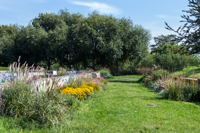
Nature Organisations
Greenspace Information for Greater London (GiGL) is the capital's environmental records centre, collating, managing and making available detailed information on London's wildlife, parks, nature reserves, gardens and other open spaces. Among their aims are the collection, validation and secure storage of comprehensive data on London's open spaces and biodiversity, and to act as a one-stop-shop for such data for the benefit of Londoners. They have a tool for easily recording the wildlife you see in your garden. Visit their website here.
London Wildlife Trust is the only charity dedicated solely to protecting the capital's wildlife and wild spaces, engaging London's diverse communities through access to our nature reserves, campaigning, volunteering and outdoor learning. Go to their website here.

